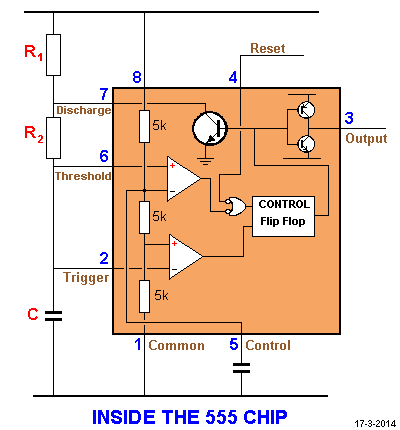Hey everyone.
I've been trying to use a 555 timer in one of my projects but I'm not sure how.
I've never used one before so I'm not sure if when I'm using it I'm setting up the circuit wrong or the chip is broken.
If you guys could help me, I'm just trying to make a rapid blinking circuit.
NOTE: My end goal is to have the output blink rapidly while a button is being pressed and do nothing when it's not. If there is a better way to do this than a 555 timer, please let me know.
Thanks.
P.S. I know this isn't really in the right section but it was the closest I could find.




